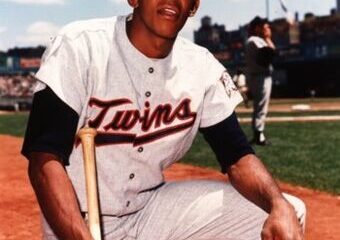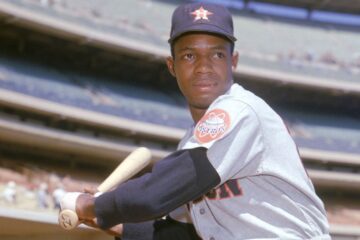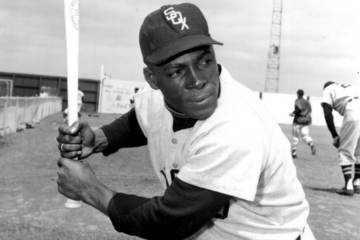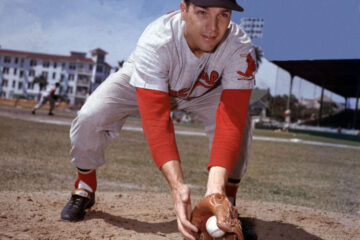The Hall of Fame Index: David Ortiz
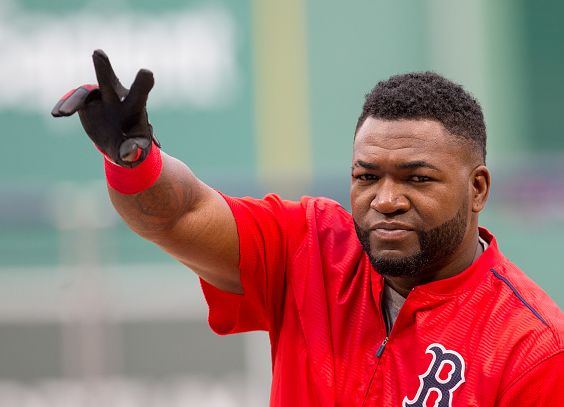
“I have come here to bury Caesar, not to praise him.” – William Shakespeare
The wisest thing the Hall of Fame ever did was insert the mandatory five year waiting period. Otherwise, Hall of Famers would get in due to the mob mentality that overcomes fans when their favorite legends exit stage left. This is particularly true when they exit of their own accord and not because the club has to tell them their time has come. This is certainly true of David Ortiz when he exited after last season.
Before we jump headlong into The Hall of Fame Index we must determine where we are to categorize Ortiz. He might be the first prominent player to get in who spent more games as a designated hitter than any other position. Others served at that position towards the end (most prominently Paul Molitor and Frank Thomas) but they played more games in the field than at DH. Edgar Martinez certainly fits the bill, but he is not in yet and likely not to get in (we will definitely cover that ground in the future). So, where do we put him?
The index only works as a comparative tool. There are no pure DH’s in the Hall of Fame, so one cannot compare Ortiz on that level. Additionally, the DH is not so much a position as a strategy. Go up to any nine–year-old playing Little League and ask them what position they want to play. None of them say, “I want to be a DH!” If any of them say they want to be a LOOGY then we really have jumped the shark. I could say more, but we will leave it here and just say that Ortiz will be compared to first basemen.
For those joining us for the first time, we are using the index from the Hall of Fame Index. The idea is to compare players using three different statistical platforms (bWAR, fWAR, WARP) to get a cross-section of expert opinions on a player’s value. We combine career value with a peak value element that takes each player’s best ten year stretch. I know you are chomping at the bit to see some numbers, so we will compare Ortiz to the bottom three representatives from the BBWAA class of Hall of Famers. The rest are head and shoulders in front, so comparing Big Papi to those players just wouldn’t be that interesting.
Career Value
| bWAR | fWAR | WARP | Total | |
| Hank Greenberg | 57.5 | 61.1 | 59.3 | 171.9 |
| George Sisler | 57.0 | 51.9 | 54.4 | 163.3 |
| Tony Perez | 55.9 | 58.9 | 47.7 | 160.5 |
| David Ortiz | 55.4 | 50.5 | 52.5 | 158.4 |
There are three core issues here that must be addressed. The first one deals with how the index is supposed to be interpreted. There are no hard and fast cutoffs when we look at the numbers. To say that Perez should be in at 160, but Ortiz should not be in at 158 is foolish. Considering the fact that there are three elements to the index score, Perez really leads him by less than a win.
Greenberg lost prime seasons serving his country in World War II. Those are unique circumstances that change how he is viewed in history. Technically, he lost three seasons, but he also lost a portion of 1945, so we could be really conservative and say he lost 20 wins total over those three plus seasons. That’s 60 wins in career value and that assumes that his peak value remains untouched (which we will see in a minute). 60 wins puts Greenberg in Jeff Bagwell company. Even a more cautious 15 wins (45 index wins) places him ahead of Frank Thomas.
So, the immediate question is whether Perez and Sisler should be in the Hall of Fame in the first place. My answer here and in the book are the same. Both were mistakes made by the BBWAA for similar reasons. Sisler accumulated over 2800 hits and Perez accumulated over 1500 RBI. Those numbers can be a sign of greatness, but they are not greatness themselves. Neither are Ortiz’s 500+ home runs for that matter.
The difficulty with Perez in particular is that most of those RBI came when he was a member of the Big Red Machine. This is a team that had Johnny Bench, Joe Morgan, and Pete Rose. Insert a good but not great first baseman into that lineup and you would expect them to average 100 RBI a season as well. How much better would Steve Garvey have been in a Reds uniform?
Similarly, Sisler had some Hall of Fame seasons, but injuries cut the effectiveness before he could mount a truly representative Hall of Fame career. He sat out the 1923 season and that that makes for an interesting dividing line in his career. Before that season he won two batting titles (hitting over .400 twice) and set the ML mark for hits in a season with 257 hits. He led the league in a total of 13 categories in seven seasons. Following 1922 he led the league twice and one of those was in caught stealings.
I promised three different arguments, but I will table the third until after we look at peak value. Peak value could also be defined as the fame element of the conversation. How good was the player when they were at their best and what did the experts of the day think about them?
Peak Value
| bWAR | fWAR | WARP | Total | |
| Hank Greenberg | 51.5 | 55.1 | 53.3 | 159.9 |
| George Sisler | 50.8 | 49.0 | 49.9 | 149.7 |
| Tony Perez | 44.3 | 47.5 | 40.7 | 132.5 |
| David Ortiz | 38.5 | 35.6 | 36.5 | 110.6 |
Wait a minute. What is going on here? Well, remember that Greenberg’s career was artificially short because of the war. He still managed to put up ten brilliant seasons and probably would have had an even better rating because the war did come in the prime of his career. Similarly, Sisler still had those seven brilliant seasons in a row, so while injuries ravaged him overall, they had only a minor impact on his peak value.
That leaves us Perez. Perez’s inclusion angers me more than any we’ve covered so far. In essence, the BBWAA was browbeat into including him because it was insinuated that they overlooked him because of his heritage. His credentials are not remarkably different from Garvey’s or Gil Hodges. The above board argument suggested that he was the glue that held the Big Red Machine together. So, let’s analyze that for a moment. Is it more likely that Tony Perez was who he was because he had Bench, Morgan, Rose, Foster, Griffey, and Concepcion, as teammates or were all of those guys who they were because of Perez? Yeah, I thought so.
This brings us to the third problem. Each platform has a way they deal with designated hitters. Wins above replacement is an all encompassing metric that includes hitting and fielding. DHs don’t field so each platform could set fielding at zero or they could assume they are the worst fielder at their position. Baseball-reference is the only source that explicitly breaks down it’s WAR into offensive WAR and fielding WAR. In all of seasons in Boston, Ortiz served as the primary DH for the Red Sox. He ranged between -1.0 dWAR and -1.4 dWAR during that time. For his career, he had -21.7 dWAR.
At first glance, that would seem to be the reason why he fared so badly in the index. You could just as easily zero him out because he didn’t contribute any value defensively and that includes negative value. However, his career bWAR was 55.4 as compared to his offensive WAR total of 56.4. In other words, all of those negative dWAR figures didn’t drown out his overall value in the bWAR category. Since the other two platforms don’t give us their secret sauce we can assume they are similar, but that might not be the case. Just for fun, we will put up the complete group of Hall of Fame first basemen here so you can see the total landscape.
Hall of Fame Index
| Career | Peak | Total | |
| Lou Gehrig | 343.1 | 266.6 | 609.7 |
| Jimmie Foxx | 298.8 | 227.7 | 526.5 |
| Jeff Bagwell | 237.9 | 191.7 | 429.6 |
| Frank Thomas | 218.8 | 169.5 | 388.3 |
| Eddie Murray | 205.4 | 143.4 | 348.8 |
| Willie McCovey | 194.1 | 158.8 | 352.9 |
| Harmon Killebrew | 191.4 | 150.1 | 341.5 |
| Hank Greenberg | 171.9 | 159.9 | 331.8 |
| George Sisler | 163.3 | 149.7 | 313.0 |
| Tony Perez | 160.5 | 132.5 | 293.0 |
| David Ortiz | 158.4 | 110.6 | 269.0 |
Again, these numbers are meant for context and not any kind of absolute dividing line. Beyond the 500+ home runs and 1500+ RBI, there is a case to be made for Ortiz. He was known as the greatest clutch hitter of his generation. Whether that reputation was completely earned is another matter entirely. Assuming we give that to him, that kind of designation is one that pushes a player over the edge. It doesn’t elevate him whole cloth. A quick look at the numbers indicates he isn’t there.
Of course, very few if any of the actual voters will read my book or look at this article. This effort is likely the academic equivalent to spitting in the wind. All that being said, the Hall of Fame is more than just numbers. This isn’t the LPGA where you get into the Hall of Fame after winning a certain number of tournaments. Your performance must have a context and that context has to be measured in something other than counting numbers.


